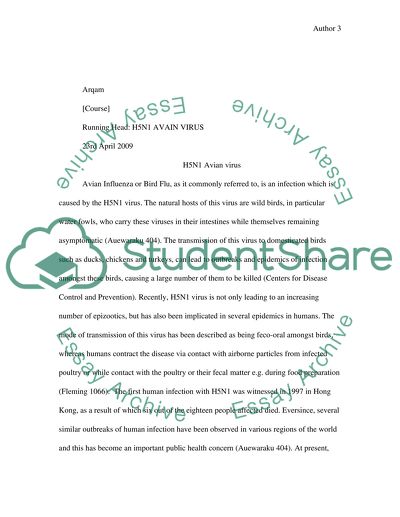Cite this document
(H5N1 Avian Virus Case Study Example | Topics and Well Written Essays - 2250 words - 1, n.d.)
H5N1 Avian Virus Case Study Example | Topics and Well Written Essays - 2250 words - 1. https://studentshare.org/medical-science/1554321-h5n1-avian-virus
H5N1 Avian Virus Case Study Example | Topics and Well Written Essays - 2250 words - 1. https://studentshare.org/medical-science/1554321-h5n1-avian-virus
(H5N1 Avian Virus Case Study Example | Topics and Well Written Essays - 2250 Words - 1)
H5N1 Avian Virus Case Study Example | Topics and Well Written Essays - 2250 Words - 1. https://studentshare.org/medical-science/1554321-h5n1-avian-virus.
H5N1 Avian Virus Case Study Example | Topics and Well Written Essays - 2250 Words - 1. https://studentshare.org/medical-science/1554321-h5n1-avian-virus.
“H5N1 Avian Virus Case Study Example | Topics and Well Written Essays - 2250 Words - 1”. https://studentshare.org/medical-science/1554321-h5n1-avian-virus.


